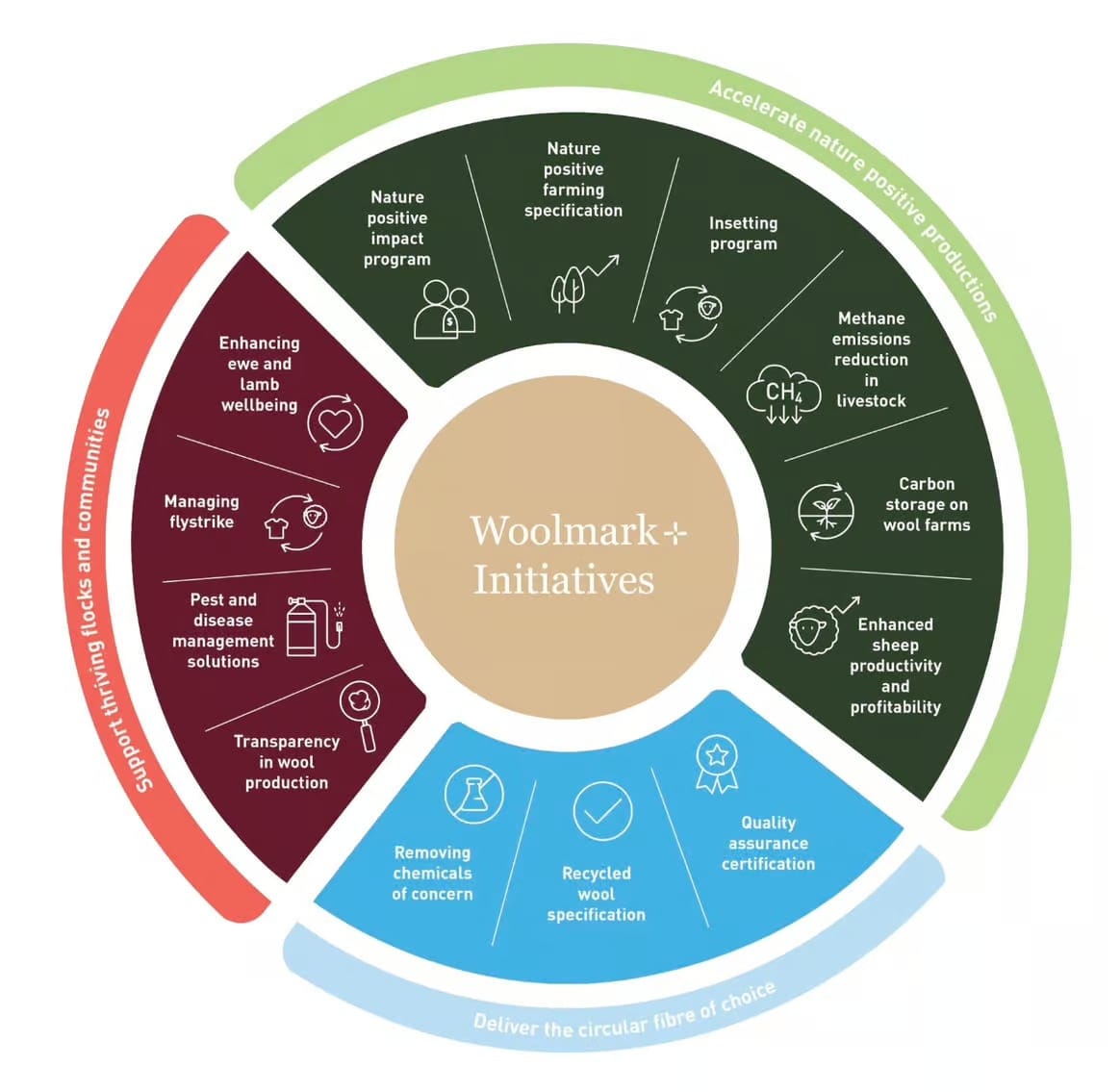The Wool Wire | September 4, 2024
Giving teeth to the sustainability claim, padding goods and goodies, and taking a lovely new walk with a wooly history

News snippets from the wool world
Hello, and a very happy September to you!
We begin with some big news from the most deep-pocketed advocacy group in the wool world, namely our Woolmark friends in Australia. It would seem entirely obvious that wool embodies everything about the word sustainable. But "sustainability" is being used more and more by global players who don't always have wool's best interests at heart.
As climate change becomes a more pressing concern, the petroleum industry is going to fight harder to promote its products as more "planet-friendly" than those grown by grazing ruminants. They want people to wear recycled plastic bottles and think that vast swaths of non-arable land around the world are somehow magically going to be transformed into kale fields that will feed us all while fixing climate change and letting those long-tortured sheep finally roam free.
I exaggerate, perhaps. But the petroleum industry isn't going to go away without a fight. So Woolmark has just launched a formal initiative that gives teeth to wool's own sustainability claims, with a tangible vision, roadmap, and benchmarks.
The ‘Woolmark+’ roadmap sets out 13 practical initiatives designed to deliver practical solutions across the entire wool value chain to empower nature regeneration, reduce carbon emissions and optimise productivity.
In a statement, Woolmark said these initiatives have been designed to support woolgrowers in meeting their business objectives while aligning with the increasing commitment from brands and suppliers to enhance biodiversity and mitigate Scope 3 emissions to bolster their sustainability goals.
It hopes that the roadmap will help brands look beyond net zero to “nature positive” solutions, defined as halting and reversing nature loss by 2030, measured from a baseline of 2020, with approaches to restoration optimised for carbon sequestration, biodiversity recovery and livelihood benefits.
This handy graphic lays out the 13 initiatives by overarching goal. As you'll see, this isn't just about how sheep are raised, it's also about how wool is removed from the sheep, processed, transformed into garments, and recycled at the end of its productive life.

Try doing any of that with a barrel of oil.
Keeping things cool in wooly packages
Speaking of ways in which wool can replace plastics, we turn to the UK, where a new company is using all British wool to kick polystyrene insulated packaging to the curb.
Puffin Packaging joins the likes of Estonia's Woola in using coarser grades of wool as the magic stuffing for keeping food and pharmaceutical products cold during shipment, and keeping your cherished belongings from getting bashed about in transit.
Making a case for change
Lest you think all wool packaging is thick and rugged, wait until you see what the French luxury jeweler Boucheron is doing with its jewelry cases.
Two years in the making, the maison’s new cases trade the 11 non-recyclable components of its old packaging for just two natural and recyclable materials: lightweight aluminium and wool felt certified with the Responsible Wool Standard. Gone is the traditional hinged form factor, simplified instead into round boxes where one can simply pull open the top to reveal its contents. The entire production process has been rewritten too, with every step optimised to ensure the smallest possible environmental footprint.
That's right, they're using wool felt in their jewelry cases! I can't tell you how much I love the idea of a $10,000 diamond necklace coming nestled in the coat of a sheep. Yet another way to get wool under people's noses, I say.
Walk the wool walk, talk the wool talk
And finally, lace up your walking shoes and head back to the UK with me for a brand new adventure with a wooly legacy. After years of work, the Sudbury Ramblers and Clare Walkers have unveiled a 50-mile Wool Towns Walk. It loops between the five West and Mid Suffolk wool towns of Clare, Hadleigh, Lavenham, Long Melford, and Sudbury, all of which have deep roots in the weaving industry.

The walk is divided into four segments, and they've written delightfully thorough guides to each, which you can find on the Wool Towns Walk website. They're almost like treasure maps, pointing you toward holes in hedgerows, past flooded fields, through busy intersections, onto convenient rest benches, and even into a pub or two.
Road trip, anyone?
And on that note, I'll let you go.
Thanks, as always, for your readership and your support.
Until next time,
Clara











